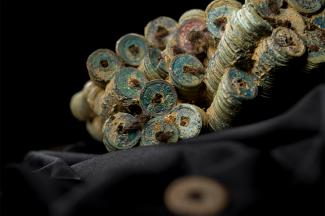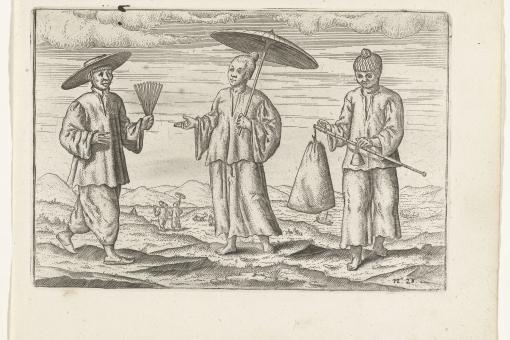These Chinese coins were found in archaeological excavations at Old Banten, the ruins of the walled port city of Banten, the 16th century capital of the Sultanate of Banten. The city, located on the north western coast of Java, has been an important hub for trade since the 7th century CE due to its strategic position on the ancient maritime trade route between China, India, Sumatra and Java.
Transnational connections
The oldest Chinese coins in this collection are from the Tang Dynasty. Produced from 621, they are inscribed with ‘Kai Yuan Tong Bao’ (meaning ‘A new, better life’). As the Sultanate of Banten only existed from 1552 this raises the question: who brought the coins to the kingdom and how were they used? Other coins from the Qing Dynasty (1723-1735) have also been found at the site.
The Chinese coins held in the collection of the Old Banten Archaeological Site Museum are round and flat, with a square shaped hole in the middle. In Banten, Chinese coins are referred to as picis, and the term picis is still used to refer to money to this day. The collection has high historic significance and highlights the transnational connections which Banten had and continues to have with the wider region.
Curators from the Old Banten Archaeological Site Museum share the significance of the Chinese coin collection held by the museum.


